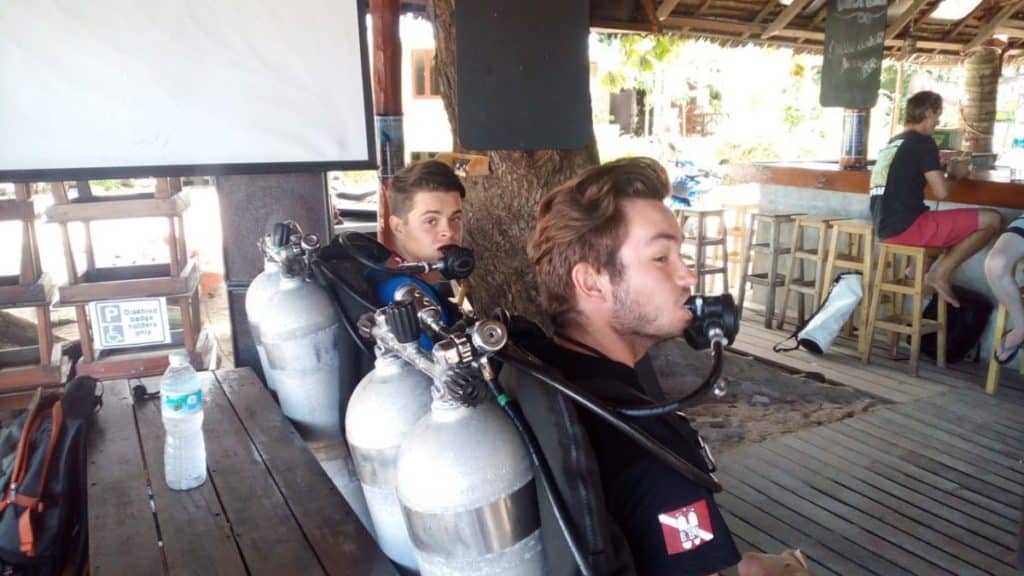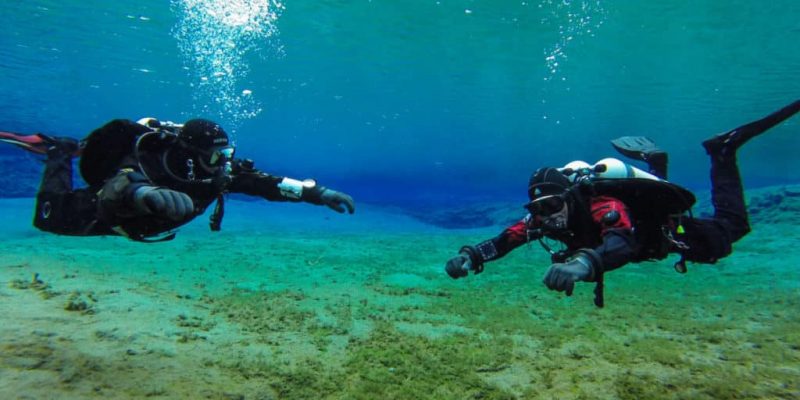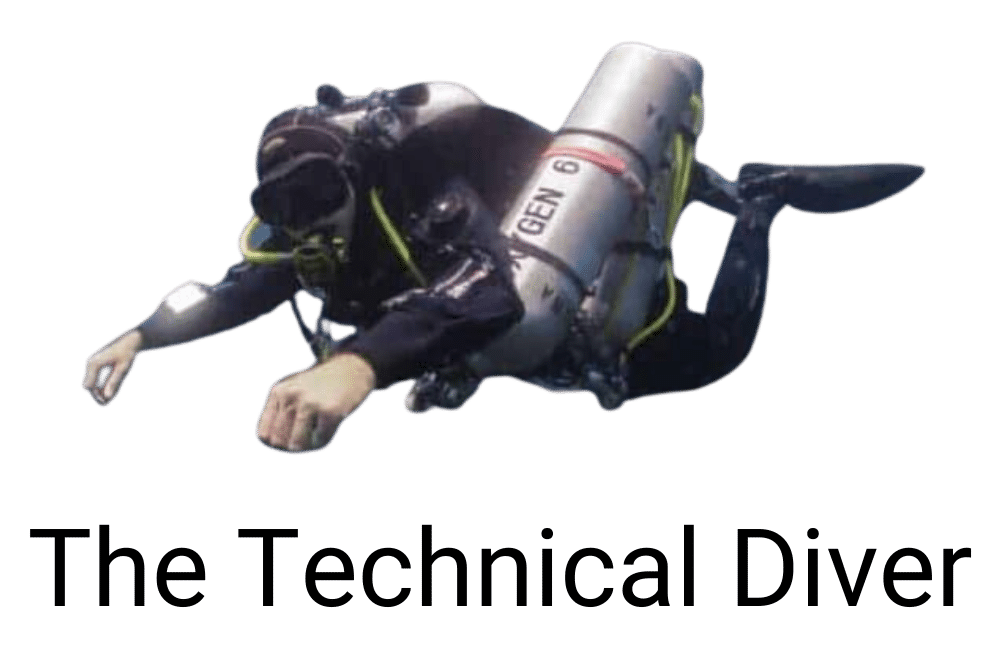Intro to tech

Intro to Tech
Intro to Tech is a brand name for TDI’s entry-level tech course, which is done using a twinset. This has always been the traditional equipment configuration for tech diving. It’s a solid platform that allows additional equipment to be added without changing the basic setup. The wing and backplate set-up used for diving in a twinset is also utilised in rebreather diving.

Pros and cons of using a twinset
A potential downside to diving in a twinset is the weight. They are heavy, especially when using steel cylinders. A long walk to get in the water is unlikely to endear you. Smaller people, or anyone suffering from back problems might also struggle. In these cases, smaller cylinders can be used- 2x 8.5L, or 2x 10L for example. Diving in sidemount may also be a good alternative.
The main advantage of a twinset is the isolation manifold. Closing a cylinder valve will only turn off the regulator that’s attached to it. As long as the isolation manifold is open, the gas in both cylinders can be breathed. That can take a bit of getting your head around, but with practice it’s straightforward.
In the unlikely event of a catastrophic gas loss, closing the isolation manifold saves the gas in one cylinder. The likelihood of a burst disk or neck o-ring failure is extremely low. In an ideal world, a dive buddy should be able to assist, but this cannot be relied on.
Typical structure of my course
The best way to describe an intro to tech course is to outline how I teach it. My courses require 6 dives minimum, but standard courses are four dives.
Equipment set up
Students learn how to set up the harness and backplate in detail. Every aspect of the twinset and regulator set-up is discussed, and weighting and balance are assessed. Students must pay attention when going through the equipment because the next day they will present how to set it up and adjust it.
Land drills
Land drills are practised before each dive. A large part of the in-water training involves understanding the manifold and learning how to manage gas. Getting familiar before getting in the water in a gradual and incremental way first is a big help.
Structure of the dives
Each dive focuses on maintaining buoyancy, trim, and positioning whilst undertaking tasks, skills, or controlled ascents. Back kicking is introduced as part of that, and other propulsion methods are practised. Every moment of every dive is an opportunity to practice buoyancy and trim, whilst maintaining awareness of what’s going on around you.
Skills
- S-drill
- propulsion techniques
- helicopter turns
- back kick
- modified frog kick
- modified flutter kick
- Regulator swap
- Mask removal and replace
- Mask switch
- Out of gas
- Out of gas ascent
- Out of gas exit, left, right, and single-file
- LPI failure
- Wing failure
- DSMB deployment
- Valve drill
- “Boom” drills (manifold and regulator failures)
We also calculate your SCR- Surface Consumption rate, also known as SAC rate (Surface Air Consumption rate). This is done when resting and working and is the first step in gas management.
Final dives
A big part of technical diving is dive planning, and this is introduced in the classroom by going through the basics of using dive planning software, and outlining how to follow a plan during a dive.
The latter part of the course consists of 3 parts:
- Practising following a dive plan
- Practising controlled ascents
- Introducing problems for you to have to deal with, such as simulated failures
The focus of controlled ascents is exactly that- control. Students need to be able to maintain buoyancy, position, awareness, and be able to communicate simply and effectively at all times. It’s pretty easy to let the air out of your BC and descend. But when decompression diving, the hard part is the controlled ascent, where there is little room for error.
The last dive usually involves the student leading the dive from start to finish and is essentially a fun dive.
For TDI’s intro to tech, the minimum prerequisites include:
- Be 15 years old
- Be an Advanced OW diver
- Have logged at least 25 dives
